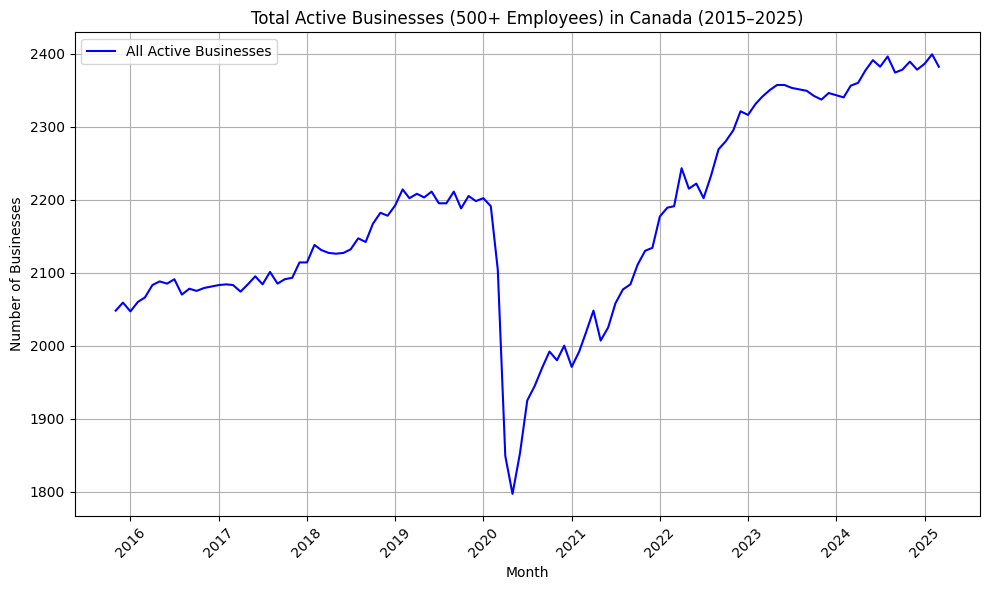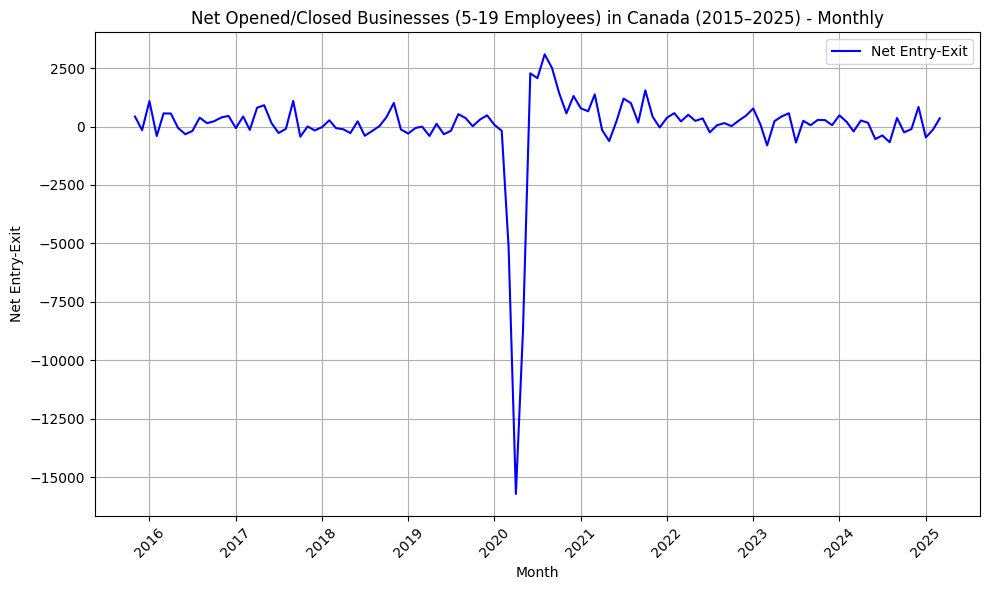Business Activity: Perhaps Things Aren't All Bad
This post is going to be unbearably boring.
I mean, sure, I’ll give you the usual mind-numbing datasets and charts - for which a lot of you seem to share my perverse affinity. But this time, you won’t even get the emotional payoff that comes with an introduction to some new level of crime, corruption, or incompetence.
You see: the real problem with this post is that it’ll describe an economic measure - a Canadian economic measure! - that doesn’t seem to be broken. You have my heartfelt apologies, but there was simply no twisting this particular data.
It all began when, as one does, I went looking for evidence of a correlation between business tax policy and business success (or failure). That led me to a new offering from Statistics Canada with the admirably catchy title: Experimental estimates for business openings and closures by employment size for Canada, provinces and territories, census metropolitan areas, seasonally adjusted. It’s only a matter of time before someone adapts that one as a tango dance number.
Sadly there wasn’t nearly enough detail there to help with my original quest. But that doesn’t mean there are no treasures hidden deep in those numbers.
Presumably, the dataset uses CRA payroll remittance data as a way to measure business activity. Specifically, it lets me break down business entries and exits by business size and sector. So assuming that the existence of more businesses is a reliable indicator of a healthier economy, let’s see what we can learn.
This first chart looks specifically at businesses with more than 500 employees. The obvious story here is how 400 companies simply disappeared during the COVID lockdowns in early 2020. That would represent around 18 percent of all businesses. But the slightly less obvious story is how quickly things recovered and - within a couple of years - how the overall rate of increase grew.
We can certainly debate the wisdom of shutting down a complex economy with little to no evidence that it would have a positive impact on public health outcomes. But this data strongly suggests that the damage hasn’t been permanent and that, if anything, current growth is faster than at any time in recent memory.
Here are the net changes to the numbers of active businesses - 500 employees and up - by industry sector from the past ten years (and through the COVID disruption):
Overall, business activity has increased in nearly all sectors. A notable loser seems to have been “mining, quarrying, and oil and gas extractions” - which probably reflects government policy decisions more than economic factors. But overall growth has been widespread and strong. The number of large businesses in the “professional, scientific, and technical services” sector increased the most.
These trends are hardly limited to large companies. Between November 2015 and December 2019, the average net increase for all businesses with 5-19 employees (of which there is currently a total of 245,062) was 129.78. That means around 130 more new companies became active than the number of existing companies that stopped doing business.
Since COVID, (specifically, between January 2022 and March 2025) the average net change was 110.6. That’s also positive, and it’s only marginally lower than pre-COVID. Here’s how monthly changes over time looked:
In other words, while there was a net loss of 15,000 small businesses during COVID, the industry as a whole has since clearly recovered and stabilized.
I can’t say whether this good news is the result of government policies or in spite of them. I’m also not necessarily convinced that “more businesses” is always and unreservedly synonymous with “healthy economy”.
But it sure does look like there’s at least one positive indication that things are still moving in a useful direction.





As Ian Dale says, "We are always glad to hear good news, for a change ..."
However, however ...
I am now retired but before retirement I ran a small CPA firm for about forty years. In that context I came in contact with many folks who were small business folk. Many of them set out in their businesses for the best reasons, flourished and grew.
There were, however, a very noticeable number who ended up in small businesses of their own simply because they couldn't find a reasonable job for their skills. Quite a number of these folk also ended up flourishing. But. A noticeable number of them felt forced into self employment because they couldn't find what the, really wanted - traditional employment - and, despite perhaps having employees, kept looking for that traditional relationship. The truth is, running a business is hard; you need not simply your skill set (be it accounting, plumbing, carpentry, etc., etc., etc.) but you also need to learn bookkeeping, dealing with the government, how to finance the activities of your business, how to sell yourself and your skillset, etc.
In other words, not everyone finds small business to be their niche. So, I wonder what portion of those new small businesses that you see in your statistics are "willing and enthusiastic" businesses and how many are "forced" small businesses.
Sorry to be a wet blanket on your analysis and I recognize that the statistics simply cannot answer my question. Notwithstanding my question, yes, I agree with you that the simple fact of an increased number of small businesses is very encouraging. But, I cannot help wondering.
We are always glad to hear good news, for a change, and especially good news that is not all puffery.